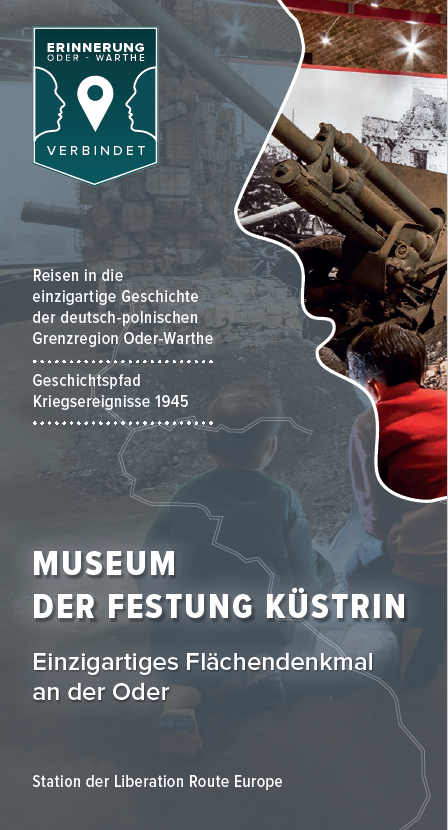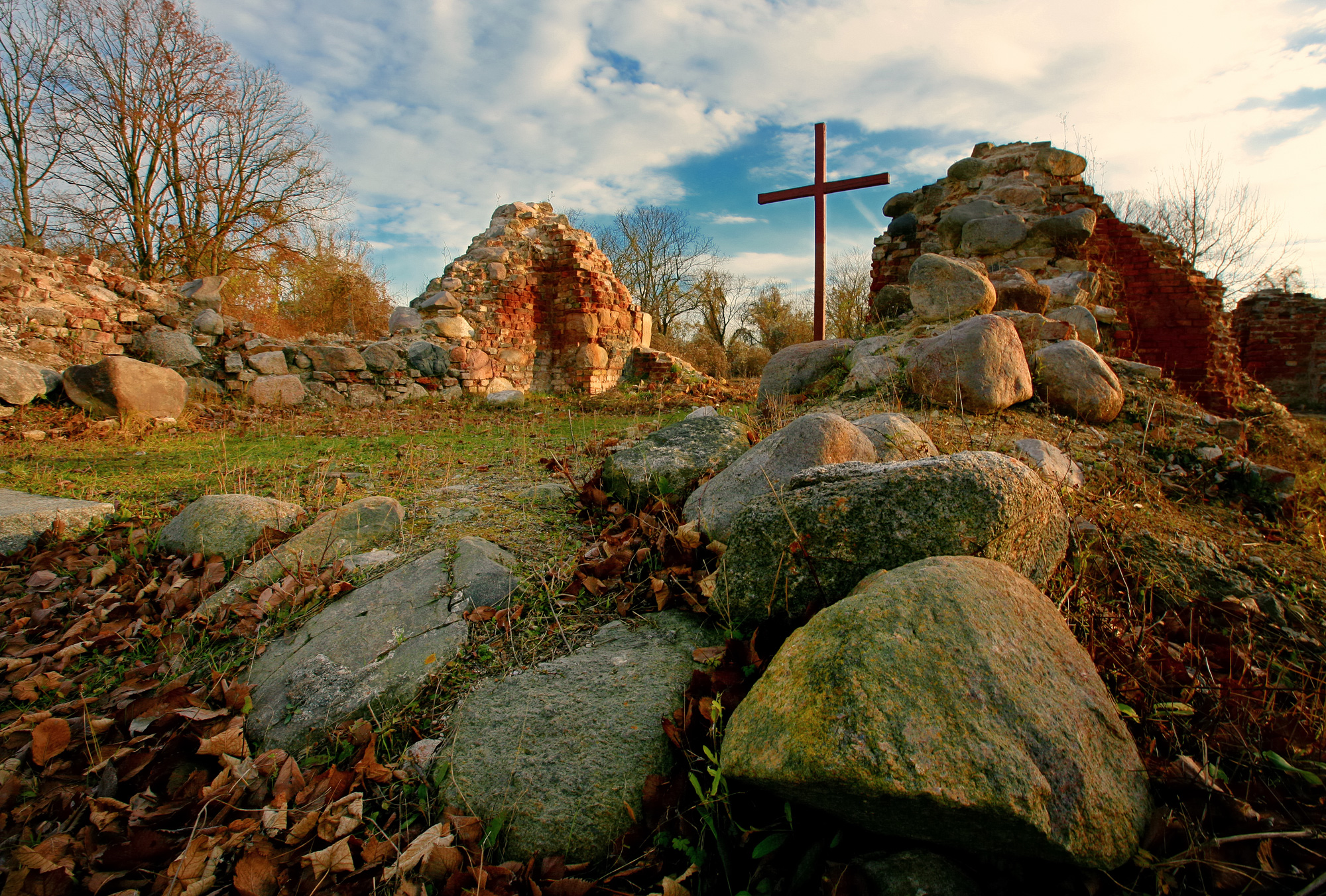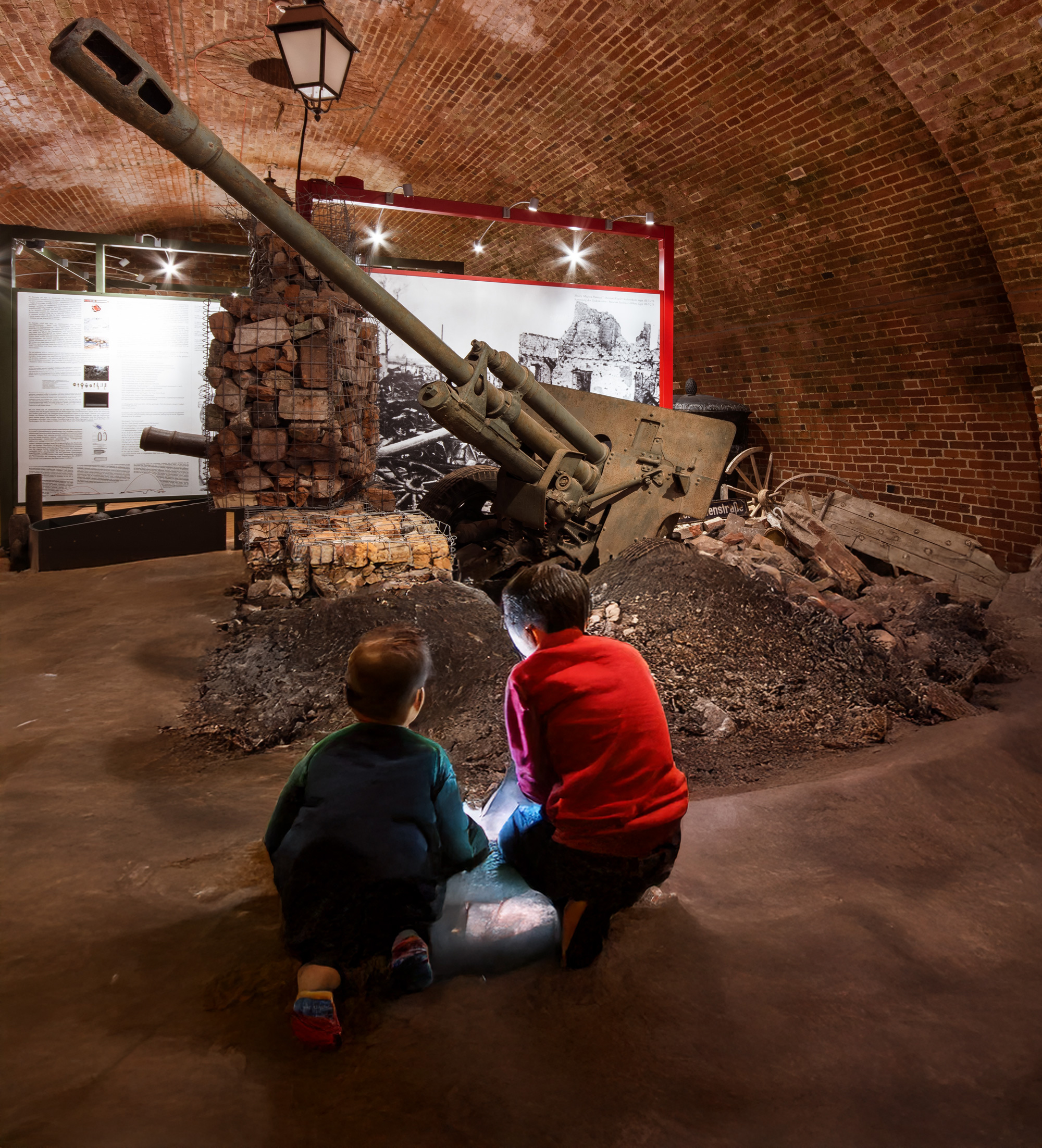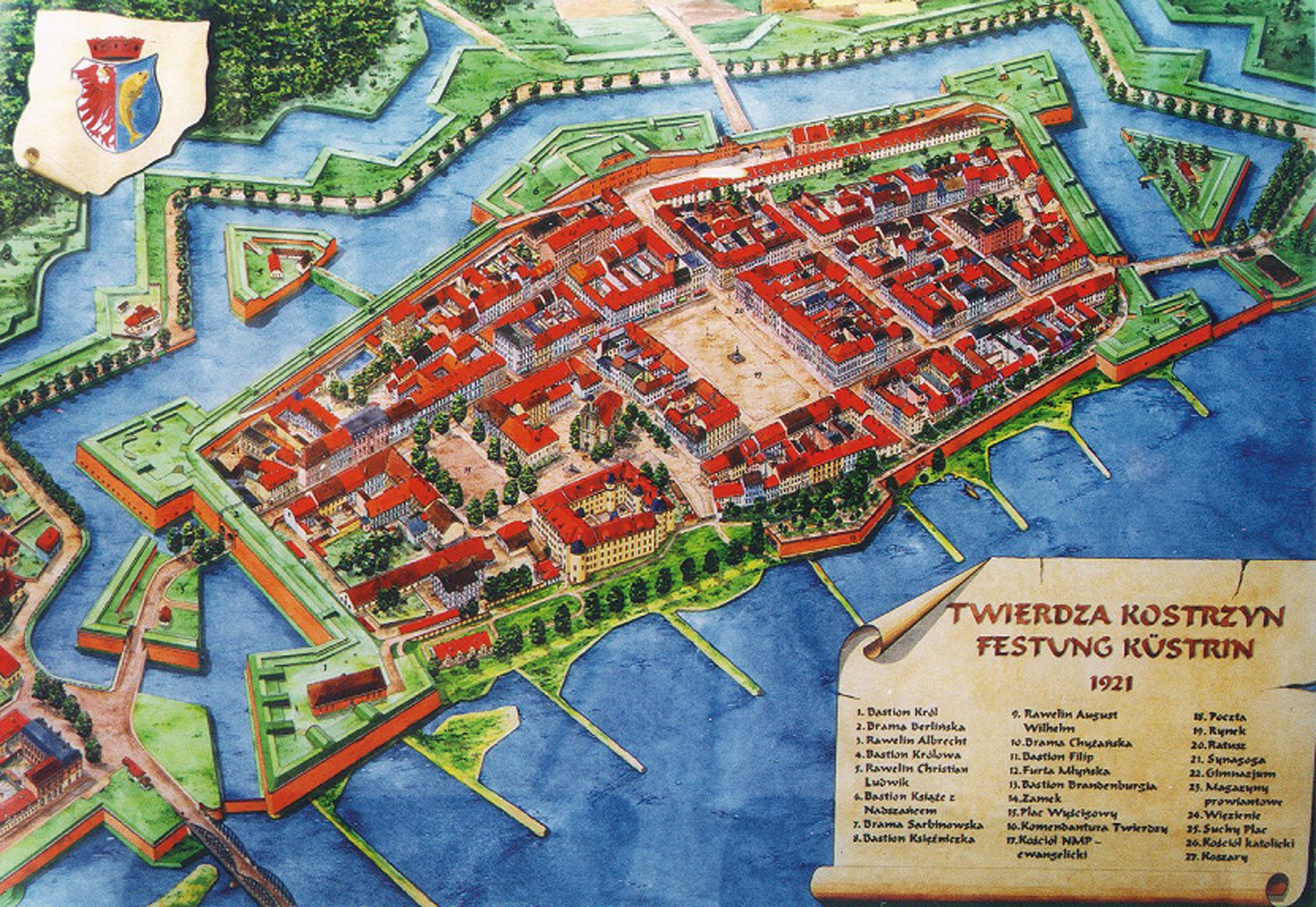Unique surface monument on the Oder
The Prussian fortress of Küstrin was built in the middle of the 16th century and, with six bastions, was one of the largest European city fortresses of its time. It was continuously expanded until 1887 and four outer forts were added: Gorgast, Zorndorf (Sarbinowo), Säpzig (Zabice) and Tschernow (Czarnow). Due to advances in weapon technology, the fortress was technically obsolete shortly afterwards and its military function was abandoned.
In January 1945, the Red Army advanced from the east, gaining considerable ground and driving refugees and scattered Wehrmacht units before them. Küstrin was an important target on the Oder because a railway line and a highway led directly to Berlin via the bridges. Meanwhile, the Germans once again declared Küstrin a fortress, made makeshift additions to the historic defences with obstacles and field fortifications and assembled a garrison of around 10,000 men to hold off the enemy as long as possible while they captured the town and occupied the bridges.
The first Red Army units reached Küstrin on 31 January. In the following weeks, bridgeheads were set up under fierce German resistance and the city was sealed off except for a small corridor. However, it could not be taken. On 6 March, the Red Army began a simultaneous attack from several sides, which was to lead to the complete elimination of the defences. On 12 March, the new town of Küstrin was conquered. On 22 March, the Soviet bridgeheads were successfully brought together and the Küstrin fortress was cut off from supplies. German attempts to relieve the fortress were unsuccessful, which even Hitler's personal intervention could not change. From 24 March, the old town was bombed so heavily that no building survived. It was not until 30 March that the fortress was finally captured and replacement bridges for traffic and the railway were built. The first train rolled over the bridges towards Berlin as early as April 1945.
On the western side of the Oder, the German troops used the time to expand their defences on the Seelow Heights, around 10 km away. The last major battle of the Second World War took place there from 16 to 19 April 1945. On 8 May 1945, Nazi Germany capitulated and the national borders in Europe were redrawn. As a result of Poland's shift to the west, Küstrin became Kostrzyn nad Odrą. The new town was rebuilt. The area of the old town was left to its own devices in the new German-Polish border region and was "forgotten" for almost 50 years. It was not until 1994 that some areas of the fortress began to be excavated, with ruins of old houses, paved streets and pavements coming to light under the mounds of earth. Today, the Küstrin Fortress Museum in Kostrzyn nad Odrą is a unique area monument, also known as the "Pompeii on the Oder". It is an impressive reminder of war and its consequences. Exhibitions tell the story of the fortress and information boards help visitors to tour the former old town centre of Küstrin.







Leave a Reply